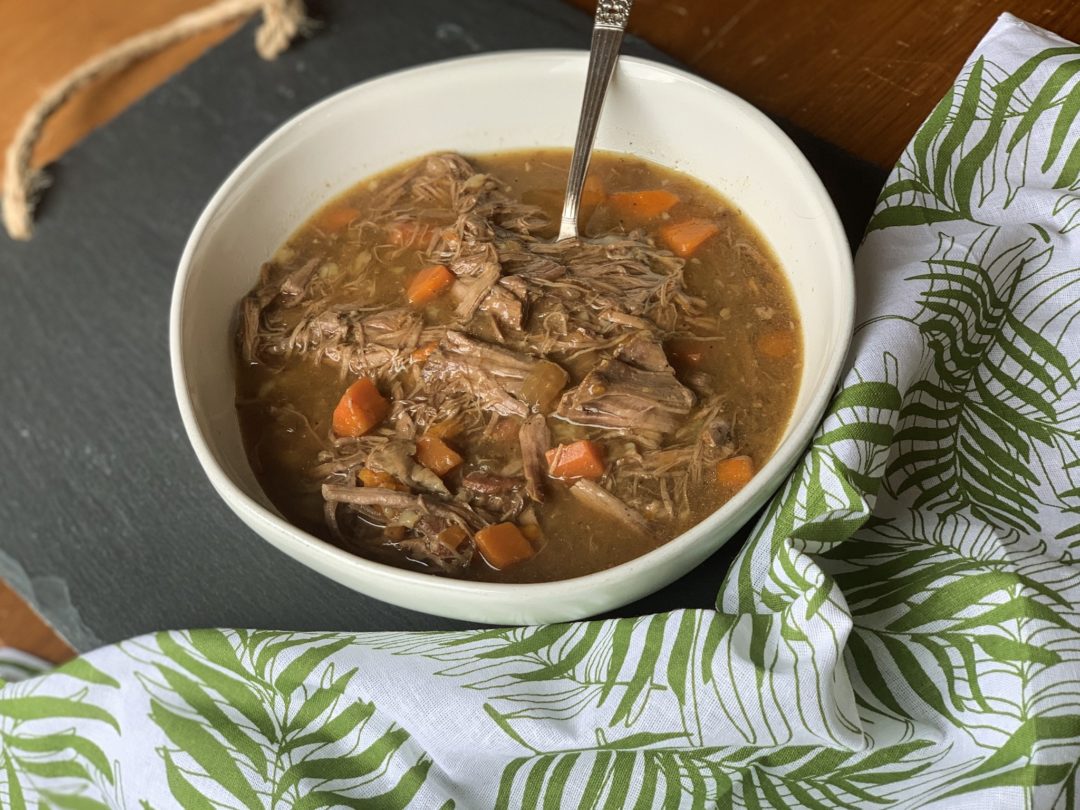Cultures around the world tend to come more alive when looking at its food through a historical lens. Today, we’re taking a look at Ireland!
St. Patrick’s Day is around the corner, and I’m sharing a few things I learned about the saint himself. Who was St. Patrick and why do we celebrate him on March 17th? And also, why did this featured recipe, Irish Beef Stew, become such an important staple to its people?
St. Patrick, known at the time as Maewyn Succat, was born in 387 A.D. in Roman-Britain. At 16, he was kidnapped and taken to Ireland as a slave. He escaped, but later returned to Ireland, and is best known for spreading Christianity throughout the country. He used the simple 3-leaved shamrock, a symbol we all recognize today, to explain the Trinity (the Father, the Son, and the Holy Spirit). St. Patrick built dozens of monasteries, schools, and churches in Ireland before he died on March 17th, and has since become the Patron Saint of Ireland.
Irish-American immigrants popularized St. Patrick’s day in the early 20th century. Today, it is primarily known as a secular holiday in the United States and in Europe.
Now, let’s get back to the Irish Beef Stew. Like St. Patrick himself, this humble stew played a critical role in Ireland’s rich and sometimes tragic history. During the 19th century, Ireland experienced a massive potato famine, which resulted in poverty, starvation, and therefore, a massive population decline. This stew was meant to stretch scarce, nutrient-rich ingredients into a sustainable meal designed to evade, or sadly delay, starvation.
Traditionally, the Irish people made stew from mutton (older sheep that could no longer produce milk or cheese) and any available root vegetables. Most Irish, even peasants, owned a kettle to cook their daily sustenance. Tough cuts of meat and root vegetables were slow-braised in this kettle over an open flame. Thanks to time and slow, continuous, heat, low-quality ingredients transformed into the quintessential hearty stew we know and love today.
The Irish Beef Stew recipe below is a modern variation of this stew that uses slightly different ingredients. Today, we like to add a stout beer, such as Guinness, to accentuate the stew’s richness and depth of flavor. We also tend to use beef instead of lamb because it is more readily available in the United States. However, you will still slow-braise the meat over low heat, like the traditional Irish version.
The Irish proverb says, “time is a great storyteller”. Share a little bit of Ireland’s rich history over this Irish-centric dinner with your family this St. Patrick’s Day.
Coat bottom of large cooking vessel, like a stock pot or Dutch oven, with oil. Heat to medium heat on stove. Add diced bacon and cook until crisp. Remove bacon from pan, and allow excess fat to drain on paper towels. Place beef in pot, increase to medium-high heat. Brown beef on all sides, but do not cook through. Remove beef from pot and set aside. Meanwhile, after removing the beef, add onions and carrots to pot. Cook until onions are translucent and slightly browned. Sprinkle flour to pan and stir to coat vegetables. Turn heat to low. Add beer to pot, and scrape bottom and sides of pan. Stir until all flour clumps completely dissolve. Return beef and bacon to pot, along with next four ingredients. Cover pot and cook on low for 5-6 hours until beef is tender and pulls apart easily. Shred beef, and remove excess fat (if desired). At this time, you may need/want to add more salt to taste. You can eat immediately, or allow to cool and store in fridge or freezer until you're ready to reheat! I like to serve with Smash Browns or Mashed Cauliflower. Irish Beef Stew
Print Recipe
Ingredients
Instructions





No Comments